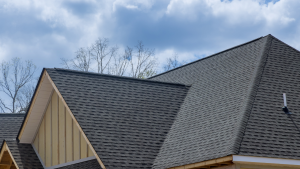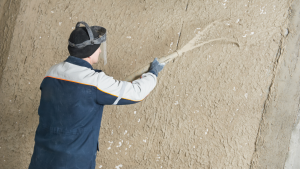Proactive maintenance is the key to keeping stucco issues to a minimum. Once you’ve applied it to your walls, it should be rather simple to maintain, needing just little cleaning or repair work to keep things in excellent shape.
Use the helpful maintenance tips for stucco below to maintain the health of your siding and prevent common issues.
Stucco Preventative Maintenance 101
The bulk of modern stucco is made with cement and sand, giving it a long lifetime. According to industry experts, stucco may endure between 50 and 80 years with adequate maintenance.
However, stucco has to be maintained to endure the whole of its useful life. Preventative maintenance is thus crucial duty.
Indoor vs. Outdoor
Indoor stucco requires far less upkeep than outdoor stucco since it often resides in a temperature-controlled area and isn’t constantly roasted by the sun. But there are instances when painting is necessary.
Outside stucco, however, needs a lot more maintenance. The sun, with which it must contend all day, is one element that might significantly exacerbate wear and tear. Other environmental elements that affect outdoor stucco include wind, muck, and dust. Due to moving autos, you may encounter a lot of dirt and dust.
Thankfully, the majority of exterior stucco has to be cleaned periodically. However, you will sometimes need to make little adjustments and repairs.
Make it a practice to check your stucco once every week to assess better whether it needs cleaning. Try one of the next methods if it’s beyond its prime.
Stucco Preventative Maintenance: Cleaning Stucco
You may clean your stucco using various techniques, including simple, complicated, and outdoor.
Regular Cleaning
Because stucco is porous, it collects dirt, whether inside or outside. If your interiors are generally clean and free of grime and filth, preserving your stucco should need water and elbow work.
You need a soft-bristled nylon brush and some warm water to clean your interior stucco. Simply damp, not saturated, is required for the brush. Use it to sprinkle water on the surface, then clean it gently. When you’re done, use a microfiber towel to remove any leftover material.
Advanced Cleaning
Stucco maintenance is challenging when removing especially challenging stains.
Industry professionals often use trisodium phosphate (TSP), a strong chemical cleaner accessible at most hardware stores. To utilize TSP effectively, considerable preparation is necessary.
Using TSP Safely
Make sure you’re using the right safety precautions while dealing with TSP. Chemical burns and other serious harm might result if this is not done.
First, check to see that your desk is well-ventilated. Open the room’s windows and doors, and turn on a fan if you can. The next step is to put on personal safety gear, such as a long-sleeved shirt, gloves, and safety glasses.
When prepared to begin, dilute the chemical 15:1 with water before working. Utilizing a nylon brush, apply it to the stucco and allow it to fully dry. This often takes a few hours.
Outdoor Cleaning
Stucco on the outside buildings could be challenging to keep up with over time. Due to its continuous outdoor exposure, outdoor stucco frequently has more dirt. Consistency is crucial to maintaining the cleanliness of your outside stucco in light of this.
You’ll need a power washer or a garden hose with a spray nozzle to clean external stucco. Utilizing your preferred tool, spritz some water on the stucco. Once adequately soaked, the stucco has to be blasted from top to bottom. Change the spraying strength. If you spray downward, the dirt won’t build up at the wall’s base.
Verify that no dirt was left behind when you have finished spraying. If you discover any, remove it manually with a brush. Make care to scrape the stucco to prevent damage gently.
If you still see faults after completing this step, spray your TSP solution directly into the stained or dirty area. Let the stucco completely dry before giving the room another thorough washing.
What Happens if Stucco Isn’t Repaired?
Stucco is a material that is, by nature, stiff. While this feature has many benefits, it may also be harmful if the surface isn’t kept clean.
Chips, cracks, and holes in stucco may form over time, providing the ideal havens for mildew, vermin, and threats. A little problem may quickly become a major one if it still needs to be resolved.
Even if you don’t see any outside flaws, your stucco might still have issues since it could sustain inside damage. This kind of harm is far more elusive and difficult to detect. Many homeowners ignore the warning indications until it is too late.
If you detect discoloration around your windows, it may indicate mold developing under the stucco. Pay attention to scents as well. If you smell a prevalent stench of wood rot, it may be a warning signs that something is amiss with your stucco.
Stucco Issues in Jersey Shore ? Contact the Experts at Jersey Shore Stucco!
Always remember that regular maintenance will increase the lifetime of your stucco. Your objectives are reachable with a little bit of work here and there to keep your siding strong, pristine, and attractive.
If there are problems with your stucco, you must act quickly to prevent more problems. Stucco Today is used to assist with it. Your surfaces will look beautiful for a very long time because of the skillful application of our stucco.
Keep a record of your stucco issues. Contact Stucco immediately and let us know how we can help.




